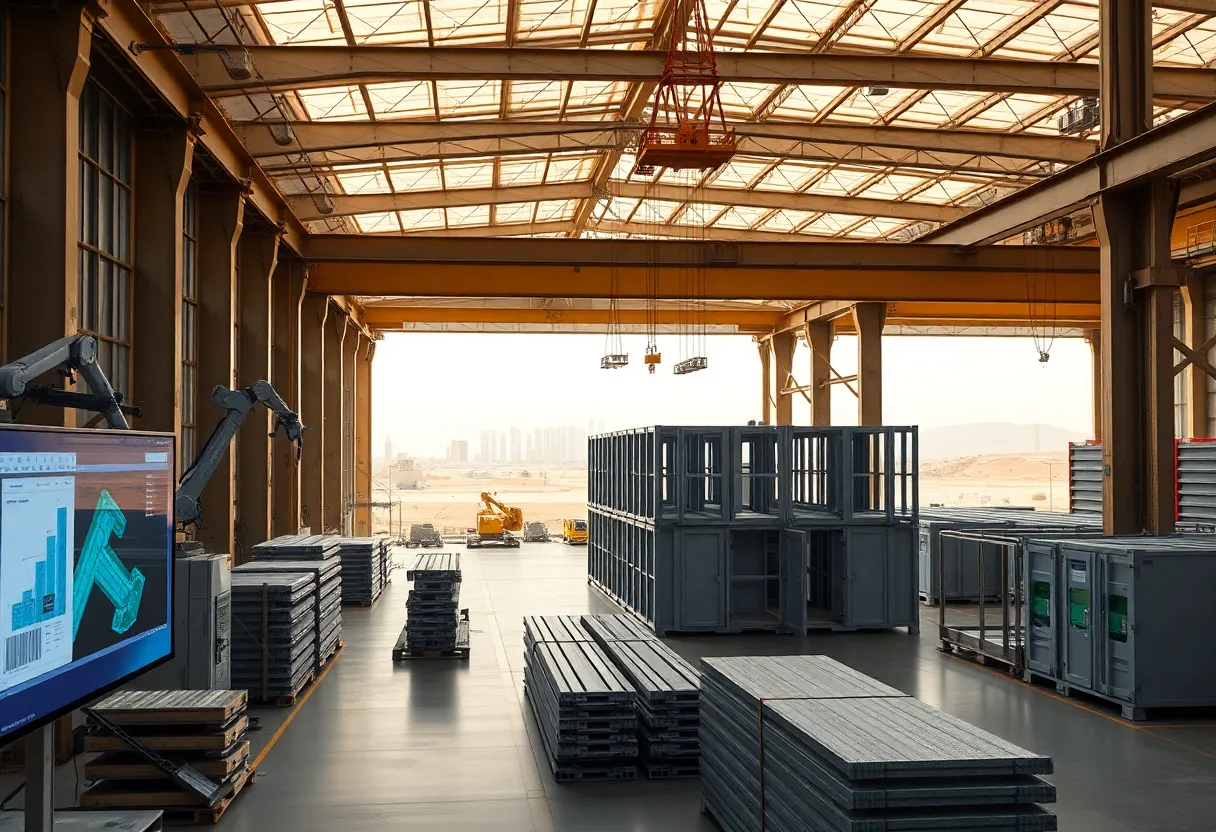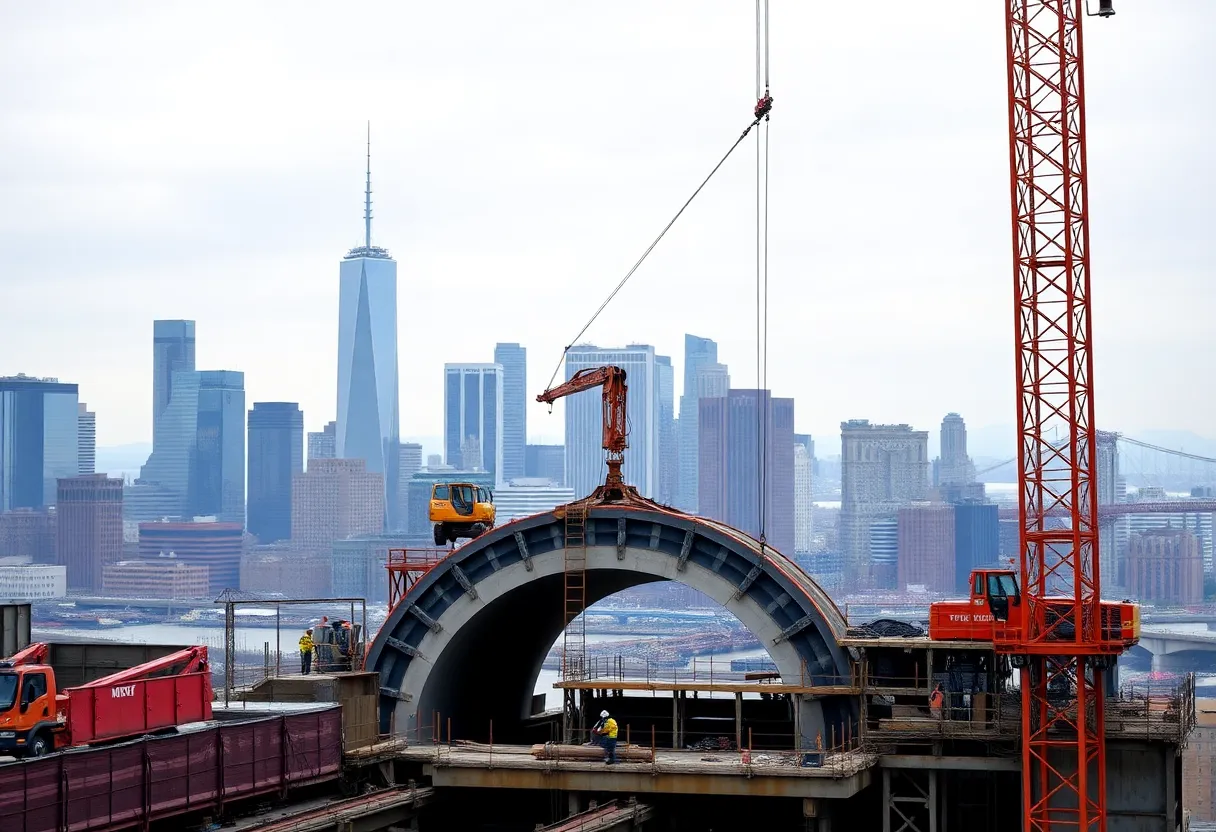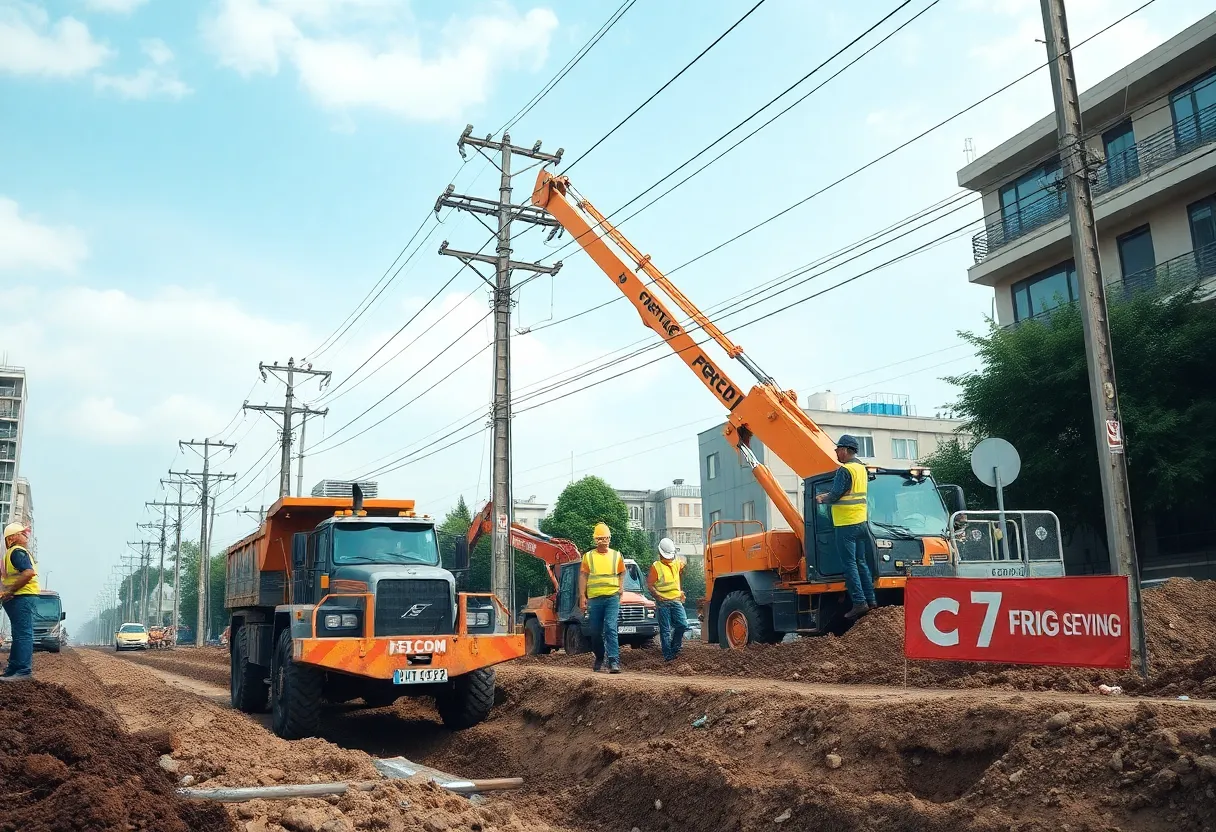Saudi Arabia, August 16, 2025
News Summary
The Saudi market for prefabricated buildings and structural steel is expanding as demand for faster, cost-efficient construction rises. Valued at $1.82 billion, forecasts project growth to $2.58 billion driven by housing needs, large government-led developments, logistics zones and investments in education and healthcare. Adoption of automated factory production, robotic assembly, 3D printing and BIM is improving quality and speed while reducing weather risk and on-site labor. Large modular plants and smart-city projects requiring rapid delivery are creating steady orders for modular components and steel frames, though volatile raw material prices and supply-chain limits remain constraints.
Saudi prefabricated building and structural steel market valued at USD 1.82 billion in 2024; projected rise to USD 2.58 billion by 2033
The Saudi market for prefabricated buildings and structural steel reached USD 1.82 billion in 2024 and is expected to grow to USD 2.58 billion by 2033, reflecting a projected 3.73% compound annual growth rate from 2025 through 2033. This upward trajectory is driven by a combination of rapid urban housing needs, heavy government spending on giga and smart-city projects, and the growing adoption of advanced manufacturing and digital design tools in construction.
Why the market is expanding
Large national initiatives and mega-projects require fast, repeatable and quality-controlled construction methods. Major programs focused on economic diversification and urban development have boosted demand for modular and steel-based construction. Plans and projects cited as key demand drivers include national transformation programs, waterfront redevelopments, the NEOM smart-city initiative and emerging entertainment and tourism hubs. An additional government allocation of USD 2.66 billion in 2024 to create 18 new logistics zones — part of a plan to grow to 59 logistics zones by 2030 — is expected to spur further demand for rapid, scalable building methods.
Technology is reshaping the sector
Advances in automated manufacturing, robotic production, 3D printing, and building information modeling (BIM) are transforming how prefabricated elements and steel components are designed and produced. Factory-based production improves dimensional accuracy and quality control, while digital design tools reduce errors, improve resource planning and shorten project schedules. New microfactory models and printed materials are being scaled by companies expanding into the Middle East, supporting faster, more customizable housing options.
Examples showing the trend
Several high-profile developments illustrate the shift toward prefabrication and steel. A smart-city initiative unveiled in 2024 in the Eastern Province represents a large mixed-use development covering 268,000 square meters with hotels, offices, retail and ample parking, underlined by the need for rapid, high-quality construction. A 200,000 square meter modular production facility opened in Riyadh in 2025 to support a major housing project; that factory uses robotics and digital systems to speed delivery of modular units. For large project camps and staff accommodation at giga-project sites, steel-framed prefab blocks with solar panels and reconfigurable designs have been contracted to supply thousands of units that can be relocated as projects evolve.
Sectoral demand and segmentation
The residential sector currently dominates end‑use demand, driven by city expansion and a growing expatriate population. Within prefabricated components, floors and roofs account for a major share of the market, while in structural steel the bulk of demand sits with H-type beams. Education and healthcare infrastructure, often procured via public-private partnerships, are also notable growth areas because they require timely, cost-effective delivery.
Regional context and fabrication market
Across the Gulf region, structural steel fabrication was valued at USD 10.11 billion in 2024 and is projected to reach USD 13.79 billion by 2030, at an estimated 5.15% CAGR. Large infrastructure initiatives and urban projects across several countries are reinforcing demand for prefabricated steel components, while digital tools and automation are being adopted to improve speed and quality.
Cost and logistical advantages — and persistent risks
Prefabrication reduces on-site labor needs, limits weather delays, and offers tighter control over material use and waste. Structural steel elements are relatively lightweight and easier to transport, cutting logistics costs. However, the sector faces notable headwinds: volatile raw material prices, limited local steel production requiring imports, and exposure to global supply-chain disruptions. These pressures can squeeze margins, delay schedules and complicate fixed-price contracting.
Market outlook
Integration of advanced manufacturing, digital design and modular assembly positions the industry to meet ambitious timelines for mega-projects, large housing developments and public infrastructure. Demand from logistics zones, education and healthcare projects, and smart-city rollouts should sustain growth, provided companies manage supply risks and control costs through diversified procurement and technological efficiencies.
Frequently Asked Questions
What is the current market size and forecast?
The market was valued at USD 1.82 billion in 2024 and is projected to grow to USD 2.58 billion by 2033, with an expected CAGR of 3.73% for 2025–2033.
What are the main drivers of growth?
Major drivers include rapid urban housing demand, government-backed mega-projects and smart-city developments, investments in logistics zones, and increased use of prefabrication to speed delivery and reduce costs.
How is technology influencing the sector?
Automated manufacturing, robotics, 3D printing, BIM, CAD/CAM and IoT-based monitoring are improving design accuracy, production speed and quality control, enabling larger-scale prefabrication and more complex steel structures.
Which market segments lead demand?
The residential sector leads end-use demand. By component, floors and roofs dominate the prefabricated building side, while H-type beams make up a large share of structural steel demand.
What are the main risks?
Key risks include raw-material price volatility, dependence on steel imports, supply-chain disruptions and pressures on profit margins under fixed-price contracts.
Where are opportunities concentrated?
Opportunities are strong in large housing programs, logistics zone construction, education and healthcare PPP projects, and in projects that demand rapid, high-quality assembly such as smart cities and worker accommodation for giga-projects.
Key features at a glance
| Feature | Details |
|---|---|
| Saudi market size (2024) | USD 1.82 billion |
| Projected market (2033) | USD 2.58 billion |
| Growth rate (2025–2033) | 3.73% CAGR |
| GCC structural steel (2024) | USD 10.11 billion |
| GCC structural steel (2030) | USD 13.79 billion; 5.15% CAGR |
| Main demand drivers | Housing demand, mega-projects, logistics zones, education and healthcare PPPs |
| Key technologies | Automated manufacturing, 3D printing, BIM, robotics, CAD/CAM, IoT |
| Notable project examples | Smart-city developments, NEOM-related accommodation, large mixed-use waterfront projects, national logistics zones |
| Main challenges | Raw material price volatility, import dependence, supply-chain disruptions |
| Market segments | Components: prefabricated building, structural steel — Floors & roofs and H-type beams lead; End use: Residential dominant |
Deeper Dive: News & Info About This Topic
Additional Resources
- GlobeNewswire: GCC Structural Steel Fabrication Industry Report (2025)
- Wikipedia: Structural steel
- TechCrunch: Mighty Buildings raises $52M to build 3D-printed prefab homes
- Google Search: 3D printed prefab homes Mighty Buildings
- Global Construction Review: Swedish firm to build 2,174 apartments for Saudi’s NEOM
- Google Scholar: NEOM prefabricated housing Saudi Arabia
- LuxuryLaunches: Sindalah transformation (NEOM)
- Encyclopedia Britannica: Sindalah NEOM
- ConstructionBriefing: 17 of Saudi Arabia’s biggest construction megaprojects
- Google News: Saudi construction megaprojects prefabrication
Author: Construction NY News
The NEW YORK STAFF WRITER represents the experienced team at constructionnynews.com, your go-to source for actionable local news and information in New York and beyond. Specializing in "news you can use," we cover essential topics like product reviews for personal and business needs, local business directories, politics, real estate trends, neighborhood insights, and state news affecting the area—with deep expertise drawn from years of dedicated reporting and strong community input, including local press releases and business updates. We deliver top reporting on high-value events such as the New York Build Expo, infrastructure breakthroughs, and cutting-edge construction technology showcases. Our coverage extends to key organizations like the Associated General Contractors of New York State and the Building Trades Employers' Association, plus leading businesses in construction and real estate that power the local economy such as Turner Construction Company and CMiC Global. As part of the broader network, including constructioncanews.com, constructiontxnews.com, and constructionflnews.com, we provide comprehensive, credible insights into the dynamic construction landscape across multiple states.





